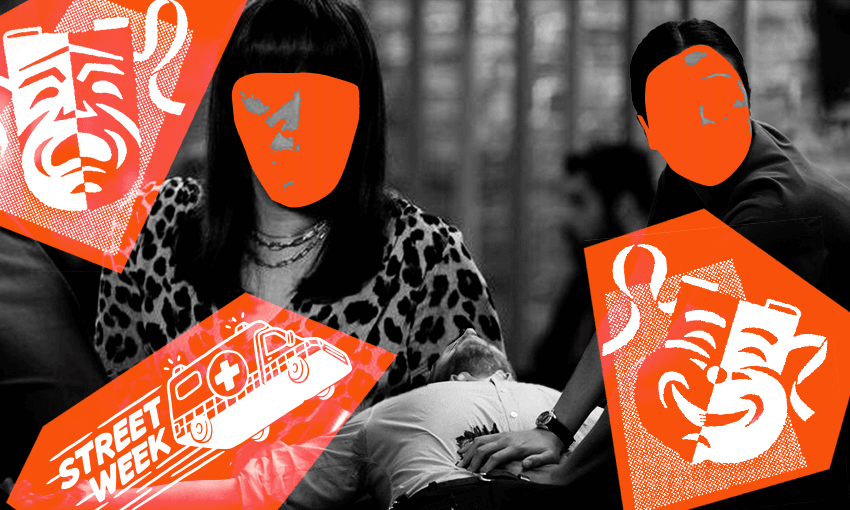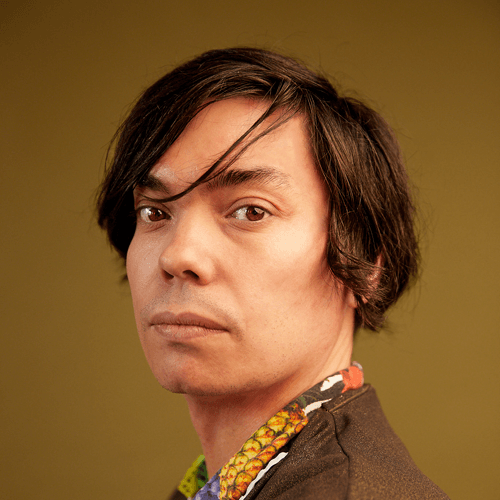Getting cast on Shortland Street is a dream come true for many New Zealand actors – but that dream takes work. Sam Brooks gets an insight into how much.
To celebrate Shortland Street’s 30th birthday, we are dedicating a whole week to the good (and not-so-good) people of Ferndale. Check out more Street Week content here.
“Good acting” is subjective. Just ask people what they think of Nicole Kidman and the responses will vary from “love her, she’s a goddess” right down to “can’t stand her, she’s my nemesis.” It also depends on context. Rhys Darby’s performance in Our Flag Means Death is great, but put it in Squid Game and it would be the most diabolical acting anybody has ever seen.
Shortland Street is fascinating context for an actor, to say the least. It’s a soap opera with ridiculously over-the-top plots, but it’s also set in a facsimile of the real world. The performances have to make sense whether a penis pic has just been discovered on the family tablet or a truck has just been driven through the hospital wall. No matter how silly or unrealistic it might seem, the audience needs to believe in the emotional reality of what’s happening.
It’s the actor’s job to carry that tone and sell it to the audience. That’s a tall order on any TV show, but how do they do it when they have to literally shoot an episode a day, could have anywhere from 30 to 100 pages to learn in a given week and probably have to pretend to be married to Chris Warner at some point?
Turns out, it takes a lot of work.
“The acting style is just really, really believing in quite dramatic stuff,” says Kura Forrester, who plays Desi, one of the all-time top tier Shortland Street receptionists. While the show is very different from anything she has done before – which ranges from intense dramas to improv comedy to stand-up – it’s become easier the more she’s done it.
Initially, she tried to get into the same rhythm as the rest of the cast, a lot of whom have been working on the show for years. At one point Ria Vandervis, who plays Harper, turned to her after they did a scene together and told her that she was speaking “fluent Ferndale” now.
“We speak fast, we act fast, and a lot can happen in one scene,” she says. “Every single scene, there’s a shift of some sort. My character gets to do some pretty outlandish stuff, so that’s when I knew I had moments to shine, because I’m the comic relief.”
While the comedic scenes comes easily to Forrester (and provide the bulk of her material – her favourite recent moment being her trashing the IV bar), the big emotional stuff doesn’t come so naturally. “When my dad died on the show, I remember putting heaps of thought and effort into it,” she says. “The emotional ones where you have to cry or get kind of angry, I really know I’ve got to focus and not mess around on set and have a laugh. I really admire the actors who have to do that every day, because there are some characters who are just constantly in turmoil.”
“I’m really glad I’m not one of them, and I’m so glad I’m not a surgeon or doctor, because fuck remembering all of those medical terms.”
The other hard thing is the schedule, which Forrester compares to a moving train. In theory, Shortland Street is a 9-5 job. In practice, it’s a 9-5 job where an actor might not be scheduled for days at a time, but has to be available to rehearse and shoot at the drop of a surgical cap.
She learned very quickly not to organise anything on a Monday to Friday. “You’re sort of just available all the time, but sometimes it works in your favour too,” she says. “I had a huge storyline a couple of weeks ago, but now it’s not so heavy.” (For example: When we talk it’s just after noon on a Wednesday, and Forrester has already wrapped for the day.)
That moving train metaphor also applies to Forrester’s advice for people who are new to the show: just keep going, even when you think you’ve messed up. “There are so many cameras on you that it might not actually matter that you’ve made a mistake,” she says. “Have a blast, learn your lines, and try to keep believing in what you’re doing even if you’ve completely mucked it up.”
Matt Dwyer, the co-founder of Barefoot Casting, has acted on the show and is currently a chaperone for the younger cast members. He believes the ability to learn lines is the main thing you need to be on Shortland Street. “The more you have your lines in your body and in your head, the more free you can be with the character,” he says.
That’s especially true for actors who might come in for a month, a week, or even a day of shooting. Shortland Street is one of the fastest-turnaround TV shows in the world, shooting roughly an episode a day, and the actors all have to keep up with that pace. “If you don’t have your lines down or your character placed, that can really upset the rhythm.”
Often the hardest thing he finds with actors, especially new actors, is getting them to relax. Shortland Street isn’t just a paid gig, nerve wracking enough as it is, it’s the paid gig, and could be an actor’s biggest paycheck in any given year. It’s also, with few exceptions, something an actor only gets one shot at. It has to count. “Of course every actor wants to come on and do a great job, and if they start feeling that they’re not doing a good job, it affects them, and the performance as well.”
Any actor under 16 on the show has to be chaperoned – essentially shadowed by a person, often a professional actor, who helps them learn their lines and looks after their general wellbeing in the fast-turnaround TV machine. “They can be so excitable, he says. “You’ve got to control the excitement levels. You get a group of teens together and the energy is quite full on at times.”
Surprisingly, the actors who find it the easiest to learn lines are often these younger ones. “Sometimes they’ll get scenes thrown at them, and they haven’t seen them or haven’t learned it, and we’ll go over them two or three times, and the lines are in,” he says. “We’re talking seven-year-olds, eight-year-olds, here.”
“It’s really exciting when you see really young kids, they can come in and just blow you away. There’s adults who can’t do that.”
Katherine McRae has worked extensively on Shortland Street on both sides of the camera, as Nurse Brenda Holloway (RIP) and as a director for several years. For her, the most important skill is the ability to self-direct. An actor’s got to be able to bring it. “There’s little time to rehearse and very little time to shoot, so it’s fantastic when actors know their lines and really commit,” she says. “There’s no time to process. Pretty quickly, actors realise they’ve got to just front up.”
McRae believes that the speed can be as much of an advantage as it is a challenge. “At the end of the day when you’re trying to finish and not drop any scenes out of that day, you can knock off scenes incredibly quickly,” she says. The well-oiled nature of the show reveals itself as the cast and crew knuckle down to knock out, say, three scenes in three quarters of an hour.
“That’s super fast. But if you get a couple of actors on their A-game, and the crew, who are usually pretty calm, you can knock them out. Those can sometimes be the most exciting scenes.”
As an actor, McRae learned the importance of changing inside a scene. In theory, that’s pretty basic – any screenwriting guide will tell you that something has to change in a scene for it to work. On a show as tightly written as Shortland Street, that’s even more important. (Watch an episode and look at how much information is being communicated, often at rapid pace, in each scene.)
If Brenda had to end a scene angry, she would start the scene happy. “Rather than starting at mid-level and having to work myself into a grump, I would just drop the happiness. Now I’m grumpy!” She names Kiel McNaughton (Scotty) as another actor who helped her get to that place, and pushed her so she’d work herself up.
“I became a better screen actor once I’d been a director on the show, because I watched so many good actors! As a director, you’d be sitting in the edit going, ‘Oh thank you, that’s awesome. Loved the way you turned to camera at that moment. Perfect.’”



